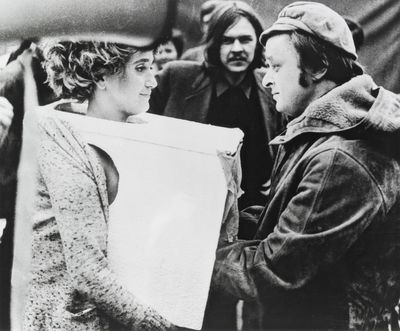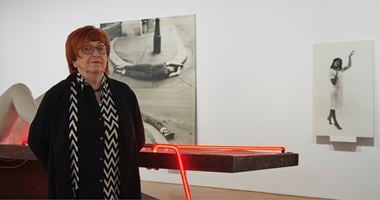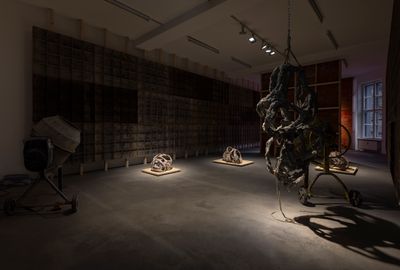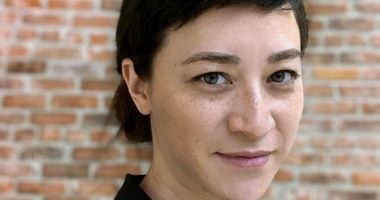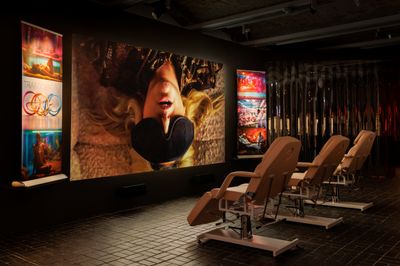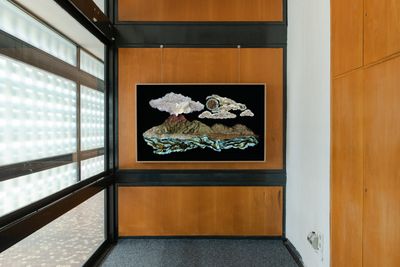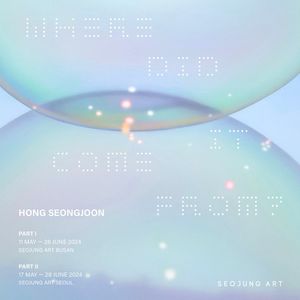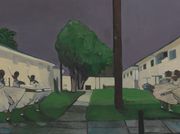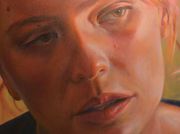Gallery Weekend Berlin 2024: 6 Stand-Out Exhibitions

Exhibition view: Valie Export, Retrospective, C/O Berlin (27 January–21 May 2024). © Valie Export, VG Bild-Kunst, Bonn.
Gallery Weekend Berlin (26–28 April 2024) featured a host of exhibitions as part of a dynamic programme throughout the city. Stand-out shows to see through the spring and beyond include Alexandra Pirici's live actions at Hamburger Bahnhof, performance artist Valie Export's retrospective at C/O Berlin, and Olga Chernysheva's theatrical metaphors at Galerie Volker Diehl.
Alexandra Pirici: Attune
Hamburger Bahnhof, Invalidenstraße 50–51
25 April–6 October 2024
Expect: a site-specific installation of choreography and performance, where bodies are set in motion alongside chemical reactions.
Inside the museum's historic main hall, Romanian artist and choreographer Alexandra Pirici presents a vibrant landscape of moving sculptures and live actions. Performers and objects alike greet viewers in Attune (2024)—an installation exploring the outcome of physical interactions between living and non-living beings.
Pirici—a trainer dancer—assembles actors and performers to create living sculptures and immersive environments that incorporate choreography and sound. Behind her work is an interest in the collective presence and its capacity to expose and address power structures.
For instance, her 2013 project with dancer Manuel Pelmuş for the Romanian Pavilion at the Venice Biennale delivered a simultaneous homage to and critique of the legacy exhibition. An Immaterial Retrospective of the Venice Biennale saw five performers enact works—including paintings, sculptures, installations, and performances—from past biennales. This embodiment, according to the artists, represented a move from 'the monumental' to the 'accessible', questioning the legitimacy of the exhibition as a gatekeeper to history.
At Hamburger Bahnhof, Pirici's installation includes a demonstration of the Briggs-Rauscher reaction—an oscillating chemical reaction commonly used to illustrate self-organising patterns. Featuring choreography and music composed by the artist, Attune marks the first of a new series of commissions for the museum's historic exhibition space.
Valie Export: Retrospective
C/O Berlin, Hardenbergstraße 22–24
27 January–21 May 2024
Expect: insight into the work of a radical postwar artist, whose practice expanded provocative critiques of gender inequality and female representation.
Operating in the conservative society of 1960s Vienna, Valie Export (born Waltraud Lehner) built upon the manifesto of the Viennese Actionists to stage shocking public interventions that contested the representation of women in film by subjecting her own body to those same cinematic practices, often to violent and graphic ends.
Calling these performances an 'expanded cinema', Export sought to implicate audiences beyond the screen. Touch Cinema (1968), for instance, saw the artist walk through the streets of Vienna wearing a box designed to resemble a movie theatre on her chest. Export invited passersby to reach behind the curtain and touch her naked breasts—offering a physical rather than visual interaction with her body, as to suggest there is more than meets the eye—in a feminist intervention that generated significant media attention and earned her the disparaging moniker of 'witch'.
In later years, Export's attention shifted from performance to film and video, through which she continued to explore her interest in identity and psychoanalysis. This retrospective covers the artist's work from the late 1960s to 2009, including her expanded cinema actions, symbolic performances, conceptual photography, multimedia installations, and urban interventions.
territory
Sprüth Magers, Oranienburger 18
27 April–29 June 2024
Expect: five artists addressing the inherent divisiveness that results from humanity's quest for ownership.
Questions of ownership and division inevitably arise in discussions of territory, with implications ranging from state policies that determine who is and who isn't allowed into a country, to the land and objects a collective body believes itself entitled to.
Disagreements centred around such false distinctions between 'us' and 'them' often lead to violence—a reality the five participating artists in territory seek to address, implicitly or explicitly, by recalling the commonalities that unite people across designated borders.
Centred on the ongoing discussion around institutional repatriation, Gala Porras-Kim's Out of an instance of expiration comes a perennial showing (2022–ongoing) traces the evolution of mould spores that have ingested ancient artefacts in the British Museum's storage facility. Making us mindful of the deterioration of all matter, artefact or otherwise, the work sheds light on the human desire to preside over our environment and the conflicts that can result as a consequence.
Modelled after entrails and informed by her interest in scatology, Mire Lee's sculptural works, including the porous body Untitled (Burlap Body Piece with Many Holes) Concrete Version (2024), contend with our innate fear of the death and decay that ultimately await us. Against this stark reality, Tan Jing proposes fiction and poetics as means of relief, with the video installation Nook of a Hazy Dream (2023) combining elements of folklore and personal experience into a narrative inspired by the story of her late grandfather who migrated from Thailand to China, shown alongside floral sculptures and a scented floral garland.
Ruyi Zhang's cacti made from discarded construction materials (Modern Fossil (Pipe)-3, 2022–2023) address the impact of rapid urbanisation in China, where veils of smog are a common sight due to mass manufacturing. Nearby, Liu Yujia's black and white video Harvesting (2023)—one of three featured works by the artist—investigates the geopolitics of the Changbai Mountain region, on the border between China and North Korea, in footage of ethnic minority Korean woman workers silently picking wood-ear fungi.
Poetics of Encryption
KW Institute for Contemporary Art, Auguststraße 69
17 February–26 May 2024
Expect: a timely dive into the perceptual shifts wrought by information asymmetry in the technological sphere.
Curated by Nadim Samman assisted by Linda Franken, Poetics of Encryption takes its lead from Samman's recent book, Poetics of Encryption: Art and the Technocene (2023), which surveys art's relationship to technological systems that 'capture users' and distort 'time-space'.
Across three sections, the exhibition looks at our present-day reliance on digital tools, despite our limited knowledge of how they work or who owns the data they generate. Featuring contemporary and historic works by 40 international artists—including Trevor Paglen, Zheng Mahler, and Kate Crawford—the show investigates how this power imbalance manifests within the cultural field, as an extension of its omnipresence in the personal and political spheres.
Amid the widespread chatter around AI, this exhibition stands out for the fact that many of the participating artists have backgrounds in scientific or technological disciplines. Paglen, for one, is also a geographer who has written extensively on mass surveillance and data collection; Zheng Mahler is a Hong Kong-based anthrozoology collective; and Crawford is an AI researcher.
Enzo Camacho and Ami Lien: Offerings for Escalante
CCA Berlin, Kaiser-Wilhelm-Gedächtniskirche
24 April–29 June 2024
Expect: works that pay homage to a 1980s massacre in the Philippines, when the country was still ruled by martial law.
This ambitious project by Enzo Camacho and Ami Lien is the result of the duo's many years of research on the Philippine island of Negros, renowned for its sugarcane plantations. There, inside St. Joseph the Worker Parish Church, the artists came across the mural The Angry Christ (1950) by Filipino American artist Alfonso Ossorio. At odds with its environment, the mural inspired the artists to devise an exhibition that similarly seeks to articulate a moment of rage.
Central to the exhibition is the 1985 massacre that took place in the town of Escalante, under the military regime of Ferdinand Marcos, when troops were ordered to gun down any demonstrators protesting the 13th anniversary of the introduction of martial law.
Conceived with residents of the island, Camacho and Lien's experimental film Langit Lupa (Heaven and Earth, 2023)—shown here alongside an animation and a kinetic installation—revisits this tragic event through personal testimonies, sequences of island vegetation, and footage of children at play.
The artists seek to open space for dialogue, questioning the politics of remembrance through an accompanying public programme that includes guided tours, a concert, screenings, and a symposium with artists and collectives from Berlin, Manila, and beyond.
Olga Chernysheva: Houseplant Is Leaving
Galerie Volker Diehl, Niebuhrstraße 2
25 April–12 July 2024
Expect: intimate paintings imbued with subtle moments of nostalgia and loss.
Olga Chernysheva's paintings possess an unusual stillness, her minimal yet resonant scenes of everyday life evoking subtle moments of nostalgia and loss.
Titled after the Russian use of the word 'houseplant' to describe someone who is unprepared for life's challenges, this exhibition—the 61-year-old artist's seventh with Galerie Volker Diehl—is conceived around the notion of a farewell, urging a collective return to post-pandemic society.
A row of performers takes a curtain call against a cerulean backdrop (Bow (Blue), 2024). A beam of light shines on an empty doorframe like a stage awaiting the next production (Spot, 2024). Yet, although theatrical metaphors abound in these works, there is no corresponding spectacle: Chernysheva's paintings unfold the poetics of a single moment to present an emotional landscape where viewers are encouraged to slow down and contend with life's challenges one at a time. —[O]

